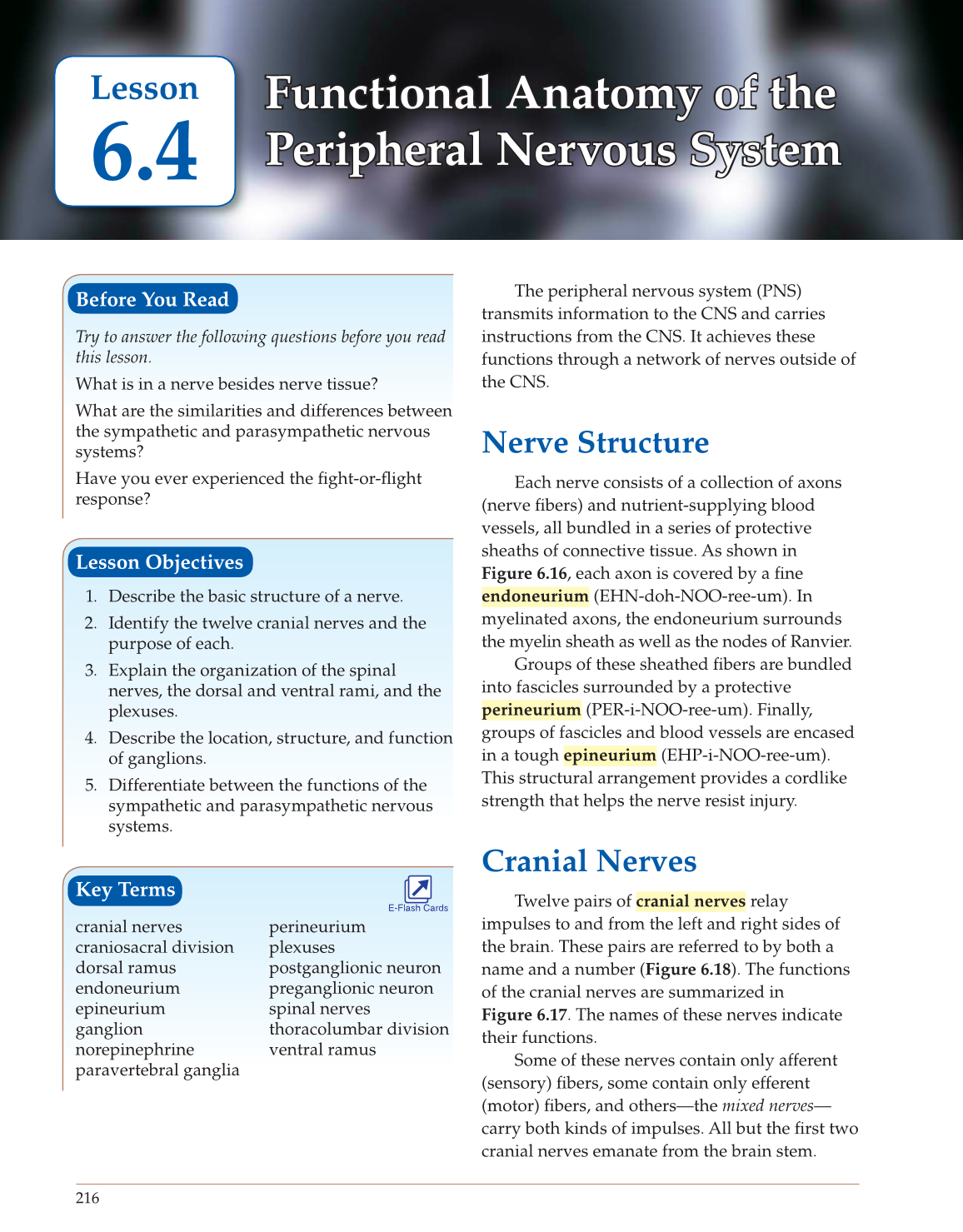216
Lesson
The peripheral nervous system (PNS)
transmits information to the CNS and carries
instructions from the CNS. It achieves these
functions through a network of nerves outside of
the CNS.
Nerve Structure
Each nerve consists of a collection of axons
(nerve fi bers) and nutrient-supplying blood
vessels, all bundled in a series of protective
sheaths of connective tissue. As shown in
Figure 6.16, each axon is covered by a fi ne
endoneurium (EHN-doh-NOO-ree-um). In
myelinated axons, the endoneurium surrounds
the myelin sheath as well as the nodes of Ranvier.
Groups of these sheathed fi bers are bundled
into fascicles surrounded by a protective
perineurium (PER-i-NOO-ree-um). Finally,
groups of fascicles and blood vessels are encased
in a tough epineurium (EHP-i-NOO-ree-um).
This structural arrangement provides a cordlike
strength that helps the nerve resist injury.
Cranial Nerves
Twelve pairs of cranial nerves relay
impulses to and from the left and right sides of
the brain. These pairs are referred to by both a
name and a number (Figure 6.18). The functions
of the cranial nerves are summarized in
Figure 6.17. The names of these nerves indicate
their functions.
Some of these nerves contain only afferent
(sensory) fi bers, some contain only efferent
(motor) fi bers, and others—the mixed nerves—
carry both kinds of impulses. All but the fi rst two
cranial nerves emanate from the brain stem.
6.4
Functional Anatomy of the Functional Anatomy of the
Peripheral Nervous System Peripheral Nervous System
Before You Read
Try to answer the following questions before you read
this lesson.
What is in a nerve besides nerve tissue?
What are the similarities and differences between
the sympathetic and parasympathetic nervous
systems?
Have you ever experienced the fi ght-or-fl ight
response?
Lesson Objectives
1. Describe the basic structure of a nerve.
2. Identify the twelve cranial nerves and the
purpose of each.
3. Explain the organization of the spinal
nerves, the dorsal and ventral rami, and the
plexuses.
4. Describe the location, structure, and function
of ganglions.
5. Differentiate between the functions of the
sympathetic and parasympathetic nervous
systems.
Key Terms
cranial nerves
craniosacral division
dorsal ramus
endoneurium
epineurium
ganglion
norepinephrine
paravertebral ganglia
perineurium
plexuses
postganglionic neuron
preganglionic neuron
spinal nerves
thoracolumbar division
ventral ramus
E-Flash Cards
